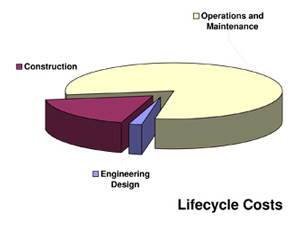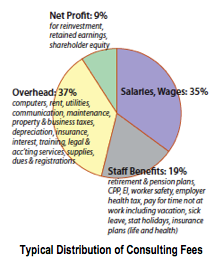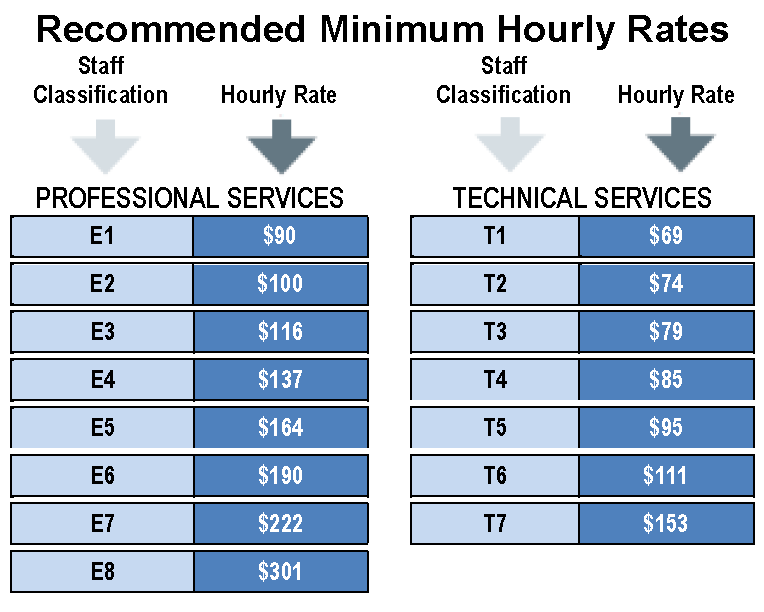Superior Engineering Solutions
"It is unwise to pay too much, but it is worse to pay too little. When you pay too little, you sometimes lose everything because the thing you bought was incapable of doing the thing you bought it to do." John Ruskin (1819-1900)
You have finally found the web host you've been looking for. Windgineering offers world class quality ASP.NET hosting services to individuals and businesses all around the world.
Windgineering provides Superior Engineering Solutions for small, medium and large businesses.
Windgineering is a professional engineering firm and is in private practice and registered in accordance with the Department of Licensing with no involvement in activities which might influence objective judgment on behalf of a client. Windgineering subjects itself and all consultant staff to a strict code of ethics and expects personal responsibility for one's professional acts and those of one's staff. Windgineering is a firm that only does work that is not only sound technically, but also takes into account the total socio-economic factors of projects for the benefit of the public.
Professional services provided by Windgineering include:- Advisory services
- Feasibility studies
- Field surveys
- Engineering design services
- Construction related engineering services
- Commissioning
- Supervision of training, maintenance and initial operation
- Record "as-built" drawings/manuals
- Total project management
- Forensic/investigation services
Fees for Windgineering Services
The word "fee" is generally assumed to be the money paid for services rendered. As Windgineering is a private business in professional practice, the fee charged to clients must cover pertinent engineering business costs. These include the salaries of employees and their pensions, group insurance, medical, and other fringe benefits. In addition, Windgineering has operating expenses, such as office rent, furniture, telephone service, professional liability insurance, bank interest on borrowed funds to finance client billings until they are paid, municipal and professional licenses, accounting and legal fees, postage, software, insurance, repairs and maintenance.
The fee charged to a client is based on these costs as a function of the available working time in the year. This enables Windgineering to determine the fee per hour or per day (per diem) for each employee. Similarly, other time/dollar units are determined for groups or teams of engineering personnel for a particular project to be completed over a specific period of time.
Depending on the type of project, nature of the work, and the client/engineer working agreement for the conduct of the assignment, the following fee arrangements are commonly used:
-
Per diem, plus out-of-pocket expenses
(applies to all types of projects except project and construction management) -
Payroll cost multiplied by a factor, plus out-of-pocket expenses
(applies to all types of projects except project and construction management) -
Payroll cost multiplied by a factor, plus out-of-pocket expenses
(applies to all types of projects except project and construction management) -
Payroll cost multiplied by an overhead factor, plus fee, plus out-of-pocket expenses
(applies to all projects except surveys, exploration, and reports; advisory services; short assessment studies and preparation of terms of reference) -
Fixed fee
(applies to surveys, exploration and reports; short assessment studies and preparation of terms of reference) -
Fixed fee plus out-of-pocket expenses
(applies to surveys, exploration and reports; short assessment studies and preparation of terms of reference) -
Percentage of cost of construction project, plus out-of-pocket expenses
(applies to preliminary and detailed engineering studies and preparation of plans and specifications; supervision of actual construction of work; project and construction management) - A combination of these methods.
The client may also consider an hourly rate which includes payroll and overhead costs only and fix the profit margin by a lump sum or percentage of construction cost. This method creates an incentive for Windgineering to expedite work and it also permits an innovative working arrangement with the client's technical staff.
In general, per diem and lump sum fees are for short-term assignments. Other types of fee arrangements are for intermediate to long-term projects.
“Engineering design” typically represents 1 to 2 percent of the overall lifecycle cost of a project, construction accounting for approximately 6 to 18 percent of the cost. All the rest - 80 to 93 percent of the lifetime asset cost - is accounted for by operations, annual and capital maintenance and decommissioning. |

|
Background of Fee Guideline
This fee guideline was developed to help provide clients with a remuneration reference for the provision of engineering services. The guideline offers commentary and discusses various fee arrangements; as well as offers a recommended schedule of minimum hourly rates for the various levels of professional and technical staff commonly employed by Windgineering.
The rates presented herein are intended as a guideline for engineering services in the calendar year 2012 and are subject to annual revisions.
Selecting an engineering firm should be regarded not as a cost but rather as an investment. Quality engineering can contribute greatly to the control of project construction cost and schedule as well as result in lower long term project life cycle costs.
Many clients have developed long-term relationships with Windgineering and as such select Windgineering based on a “sole source” basis. This “sole source” process is based on qualifications rather than price.
If a client elects to go the competitive route for consultant selection, then a Qualifications Based Selection process is recommended. Qualification Based Selection incorporates principles that helps ensure a competitive process that will achieve the goal of adding the greatest value for the client. This selection process diverges from price-based selection practices in that it allows Windgineering to demonstrate how they can add maximum value to a client’s project rather than focusing on how to minimize their fees to ‘win’ an assignment.
Regardless of selection process utilized, it's recommended that a formal client/consultant agreement be established describing the terms and conditions of the engagement prior to beginning the work.
Fee Arrangements
The word "fee" is generally assumed to be the money paid for services rendered. Depending on the type of project, nature of the work, and the terms and the conditions of the client/consultant agreement, the following fee arrangements are commonly used:
- Fixed fee – a lump sum arrangement is recommended in situations when the scope of services and schedule can be clearly defined and understood. Fees of this type can be developed from the bottom up or derived as a percentage of construction cost. For example, the percentages utilized for building projects are listed in some Client standard agreements as well as in the Architects Association General Bylaws. In addition, when the Prime Consultant assigns sub-consultants to complete portions of the design, the fees for those services can range between 80% and 100% of the Prime Consultant’s fee for that portion of the design. The percentage fee may also apply only to the labor component of a fee with expenses considered extra. The consulting engineer assumes a risk to perform the work within the fixed fee offered. The consulting engineer’s return for assuming this risk is built into the fixed fee and therefore a breakdown is not usually provided.
- Hourly – a time and material arrangement is recommended in situations when the scope of services and/or schedule cannot be clearly defined. Rather than commit to an upset limit which imposes a fixed return for unknown risks, it is recommended that Windgineering monitor fees and provide the Client with regular status and forecast updates.
- Per diem – or per day fees is a variation on the hourly rate type fee arrangement whereby a cap on hours per day is effectively implied.
- External costs include out-of-pocket expenses for mileage, meals, lodging, etc. as well as sub-consultants where applicable and these costs may be subject to a mark-up for handling costs.
- A Combination of These Arrangements – may be employed for projects where a large part of the scope can be defined, i.e. fixed fee, but where additional services may be required, i.e. hourly or per diem.
Development of Hourly Rates
Since Windgineering is a business with a professional practice, the fee charged to clients must cover pertinent engineering business costs and margin as illustrated in the Typical Distribution of Consulting Fees:
Windgineering has a unique mix of professional, technical, and administrative support staff with differing levels of experience, expertise, and responsibility. These individuals are grouped into various staff classifications accordingly. To enable the recovery of the costs associated with overhead and staff benefits, as well as to generate a profit, windgineering typically develop hourly rates predicated on a multiplier of salary costs. The Office of the Information and Privacy Commissioner has advised that the practice of disclosing salary multipliers to clients is not reasonable if a less privacy intrusive practice can be used. Divulging salary information related to specific staff may contravene the Privacy Act and the security of such information may be at risk.
The recommended minimum hourly rates presented in this Fee Guideline are predicated on staff working at a reasonable chargeability rate in a consulting engineering office. However, for unique assignments, Windgineering can revisit the rates examining the circumstances under which an employee is working. For example, a second employee’s benefits may be no different than those for an office based employee, however, the remaining elements may be different and may hold the potential to lower the hourly rate over the extent of the project. Similarly, if the work is highly specialized and/or high risk in nature and Windgineering has niche resources to do the work, then this may hold the potential to increase the hourly rates charged.

Staff classifications describing various levels of responsibility, experience and training are presented. Recommended minimum hourly rates for those categories are presented below. With some interpolation, most engineering and technical positions can be categorized to align within these classifications.
Lastly, note that since hourly rates are derived from the Typical Distribution of Consulting Fees, the rates listed in this Fee Guideline are subject to revision annually. Similarly, for multiple year assignments, it is recommended that a rate escalation clause be included in the terms and conditions of the client/consultant agreement.

Staff Classifications
Profesional ServicesE1 Member-in-Training E2 Junior Project Engineer E3 Intermediate Projects Engineer E4 Senior Engineer/Discipline Lead E5 Senior Specialist Engineer E6 Senior Consultant E7 Division/Branch/Engineering Manager E8 Corporate Manager/Expert |
Technical ServicesT1 Technician T2 Technician/Technologist T3 Technician/Technologist T4 Technician/Technologist T5 Technician/Technologist T6 Technician/Technologist T7 Technician/Technologist |
Charges for Disbursements
|
Internal disbursements are recommended to be captured for invoicing in a single charge as a fixed percentage of professional labor. This will vary, but typically ranges between 5-10%. Internal disbursements may include:
|
External disbursements are recommended to be charged at cost plus 5-10%. This may include:
|
It is recommended that the client and the engineering consultant review the projected expenses prior to the start of the project and agree on the applicable disbursements category and reimbursement method.